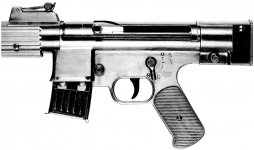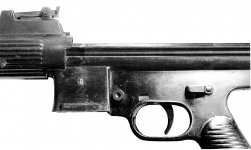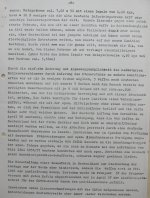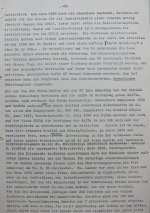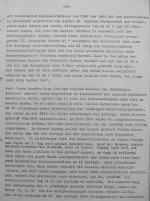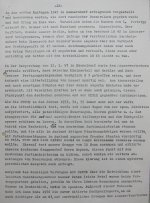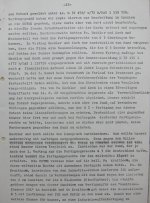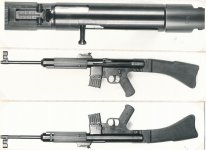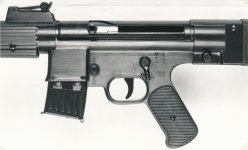GunKraut
Senior Member
Part of the letter from Wirtgen to Vorgrimler, dated November 1977, with description and serial#
Thank you, this is really interesting. After reading Wirtgen's letter, I am convinced the Rastatt rifle he is referring to is indeed one of the Vollmer rifles. I have attached two pictures of the Vollmer rifle and one picture of S/N 2 located at Springfield Armory.
What immediately jumps out when reading Wirtgen's description of the Rastatt rifle are the distinguishing features setting it apart from Springfield Armory's S/N 2. First there are the wooden, screwed on hand grips. Then there is the selector switch which, besides being located in a different spot, has the locking detents and "D", "E" and "S" positions on the opposite side of the selector switch, exactly as Wirtgen noticed. The Vollmer rifle also has "G06H" stamped on top of the butt stock ferrule, again as described in Wirtgen's letter. Wirtgen goes on talking about the "massive feel and clean appearance" of the Rastatt rifle which in my opinion refers to the clean, sharp lines and smooth surfaces of the milled Vollmer rifle compared to the somehow washed out lines of the stamped Springfield Armory rifle.
Wirtgen also refers to the serial number of the Rastatt rifle as "02" while the Gerat06H in possession of Springfield Armory clearly only has the single digit "2" stamped into the magazine well. The original Gerat06H is equipped with a Heckler & Koch style trigger pack (well, for the sake of historical correctness, I should say H&K rifles are equipped with Gerat06H style trigger packs). You can see the tabs stamped into the grip housing which the trigger pack is supposed to rest on. You don't see the tabs on the Vollmer rifle, although there are dark shadow where the tabs are supposed to be. Also noteworthy about the Vollmer rifle is the shape of the ridges on the hand guard. The Vollmer rifle has very nice, square and straight ridges with pronounced, sharp ends. This is completely unsuited for stamped fabrication as sharp corners and edges tend to over stretch the sheet metal, causing it to tear in those areas. Stamping loves smooth corners and edges, like the ones we see on the Springfield Armory Gerat06H.
Lastly, and this is debatable, through the ejection port of the Vollmer rifle I see a line on the surface of the Vollmer bolt. This could be a scratch mark from operation although the hardness of the bolt should preclude any scratching. In my opinion, and I may be totally wrong on this one, the line is the visible edge of the anti-bounce bolt latching piece. We find this latch usually on the left side of CETME and H&K bolts but in the case of the Vollmer rifle, the latch would get into the way of the charging handle, thus the latch needs to be moved to the right side or, in the case of the repro rifle used by Forgotten Weapons, to the top of the bolt. Without the anti-bounce latch there is a chance of out of battery detonation. The original Gerat06H did not have this latch which was invented by Vorgrimler after WW2.
Thank you for posting Wirtgen's letter to Vorgrimler. Has there been a reply from Vorgrimler back to Wirtgen? It would definitely answer the question if the Vollmer rifles were indeed very early milled prototypes, or copies of very early prototypes or just poor copies of the Gerat06H altogether.
